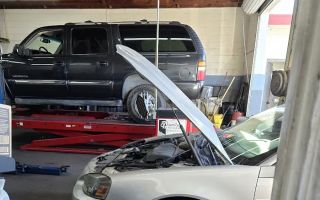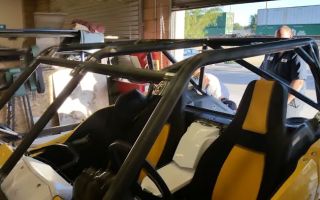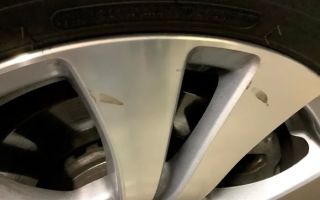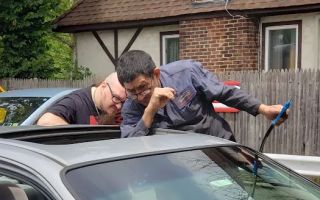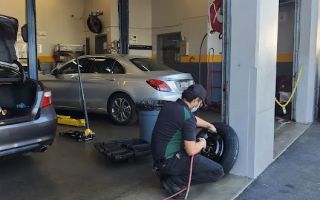There I was, stuck in the middle of the road with a car that simply refused to shift gears. The clutch pedal was completely unresponsive, and the gears seemed locked in place. If you've ever been in this situation, you know the sinking feeling of realizing your clutch has failed. I’ve been there before, and after some trial and error, I learned how to handle the situation. If you're wondering how to fix a car with a stuck clutch, this step-by-step guide will walk you through what you can do to get back on the road—or at least to a mechanic—without too much hassle.
Understanding the Clutch System
Before diving into repairs, it's crucial to understand how the clutch system works and why it might fail. The clutch in a manual transmission car connects and disconnects the engine from the wheels. It enables you to shift gears smoothly, and when it’s engaged, it allows power from the engine to be transferred to the drivetrain. When you press the clutch pedal, it disengages the clutch from the engine, allowing you to change gears. If the pedal feels stuck or doesn’t respond, the system has likely failed or is in need of adjustment.
Common issues that can cause the clutch to stick include problems with the hydraulic system, low clutch fluid, a damaged clutch master cylinder, or even air in the hydraulic lines. On occasion, a worn-out clutch disk can lead to this issue as well. The symptoms might be varied, from a pedal that feels overly stiff to one that’s too loose. Regardless, identifying the issue and acting quickly is key to preventing further damage to your car.
Step 1: Check the Clutch Pedal and Fluid
The first step when dealing with a stuck clutch is to check the clutch pedal itself and the fluid levels. Here's what I did:
- Pedal Resistance: I checked if the pedal was stiff or unresponsive. A stiff pedal can indicate issues with the hydraulic system, such as a failed master or slave cylinder. An unresponsive pedal might indicate a fluid leak or an air bubble in the system.
- Clutch Fluid: The next thing I did was check the clutch fluid reservoir. Low fluid levels can cause the pedal to stick or fail to engage properly. If the fluid was low, I topped it up with the recommended type of fluid, as specified in the vehicle’s owner’s manual.
If the fluid level was fine and the pedal still wasn’t responding, the issue likely lies deeper within the system. I also looked for any signs of fluid leaks around the master cylinder, slave cylinder, or the lines leading to the clutch assembly. Leaks can cause a loss of hydraulic pressure, rendering the clutch useless.
Step 2: Bleed the Clutch System
If you’ve topped up the fluid but the clutch is still stuck, it might be time to bleed the clutch system. Over time, air can get trapped in the hydraulic lines, leading to poor or no clutch engagement. I decided to bleed the system to remove any air that might have been present. Here’s how I did it:
- Locate the Bleeder Valve: The first thing I did was locate the bleeder valve on the slave cylinder. It’s usually a small valve that you can open with a wrench.
- Prepare the Equipment: I gathered a clear tube, a wrench, and some fresh clutch fluid. I connected the tube to the bleeder valve, placing the other end in a container to catch any excess fluid.
- Bleeding Process: I asked a friend to press the clutch pedal while I opened and closed the bleeder valve. With each press, the air and old fluid would be expelled from the system. I repeated this process until the fluid coming out was free of bubbles.
- Check Pedal Feel: Once I had successfully bled the system, I checked the clutch pedal. It should feel smoother, and there should be less resistance, indicating the air had been removed from the lines.
If bleeding the system solves the issue, then your clutch problem was likely due to air in the hydraulic lines. However, if the pedal still sticks, you’ll need to investigate further.
Step 3: Inspect the Clutch Master and Slave Cylinder
At this point, I realized the problem might be related to the clutch master or slave cylinder. These components are responsible for transferring hydraulic pressure to engage and disengage the clutch. If one of them fails, it could cause the clutch to stick. To check these components, I took the following steps:
- Master Cylinder Inspection: I checked the clutch master cylinder for leaks. If the master cylinder was leaking, it would result in the loss of hydraulic pressure, leading to clutch failure. I noticed that the fluid levels kept dropping even though I kept topping it up, which is a clear sign of a leak.
- Slave Cylinder Check: Next, I inspected the slave cylinder. The slave cylinder is typically located near the transmission, and it can sometimes fail due to wear or damage. If the slave cylinder is leaking or damaged, it may need to be replaced.
If either of these components is faulty, replacing the clutch master or slave cylinder is necessary. These parts are not too expensive, but the repair can be complex depending on your vehicle's make and model.
Step 4: Check the Clutch Pedal Linkage
In some cases, the problem can be with the clutch pedal linkage, especially if the pedal is too loose or too stiff. I took the time to inspect the linkage for any signs of wear, damage, or obstruction. The linkage connects the pedal to the rest of the clutch system, and if something is out of place, it can prevent the pedal from operating correctly. I ensured that the linkage was properly aligned and functioning as it should. Sometimes, the linkage might simply need lubrication or minor adjustments.
Step 5: If All Else Fails, Seek Professional Help
After going through all of these steps, I had a good idea of what was wrong with my clutch. If your clutch is still stuck after checking all these components, it might be time to call in a professional mechanic. Sometimes the issue can be more complicated, such as a worn-out clutch disk or problems with the clutch pressure plate. A professional mechanic has the tools and expertise to diagnose and repair these issues.
While I managed to fix my clutch issue on my own, I understand that not everyone is comfortable with DIY car repairs. If you’re unable to fix the issue or if you prefer to avoid the hassle, you can always rely on a trusted towing service to get your car to a professional mechanic. A reliable towing service, like Rescue & Towing, can ensure your car is safely transported to a garage for more extensive repairs if needed.


